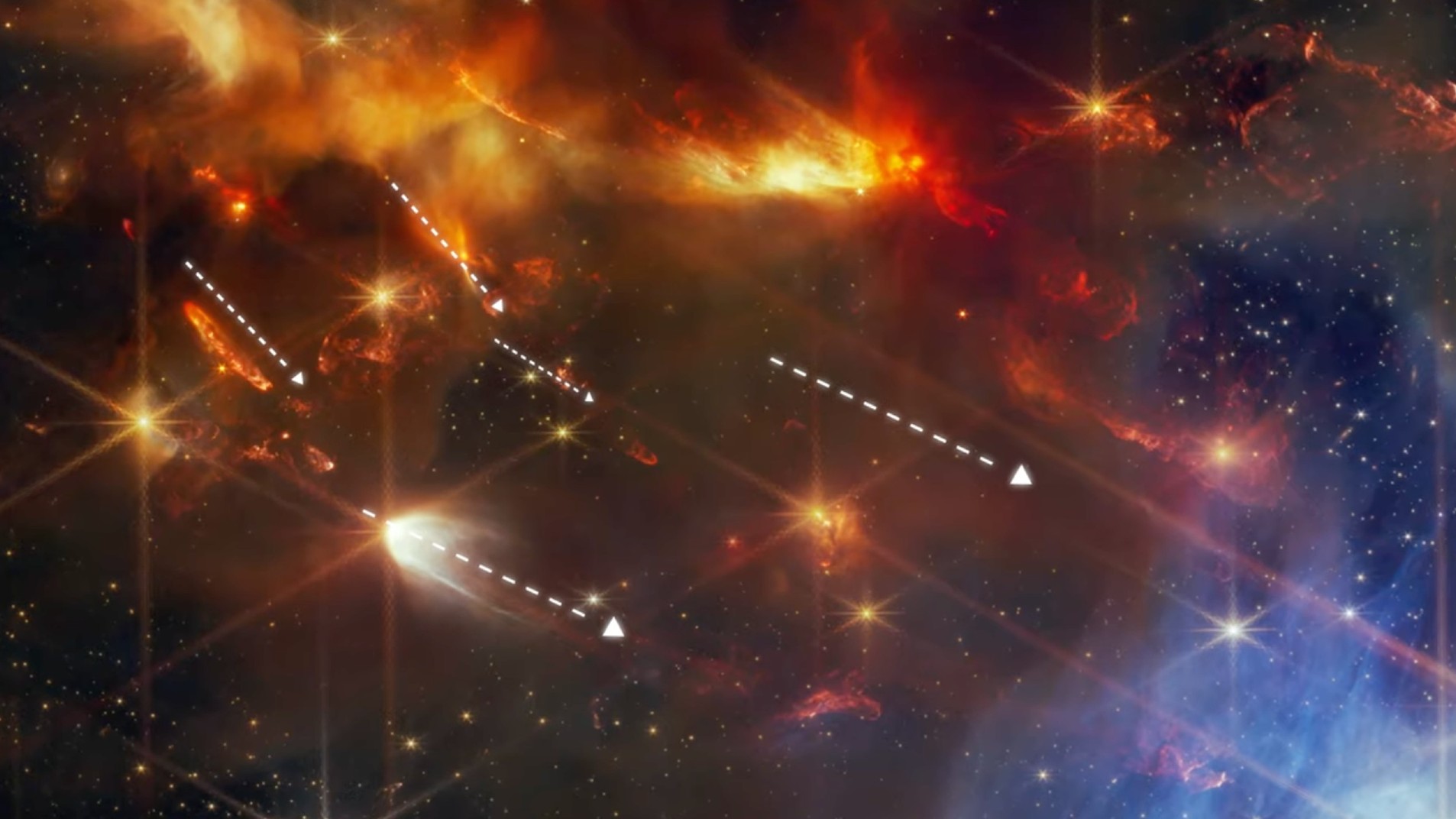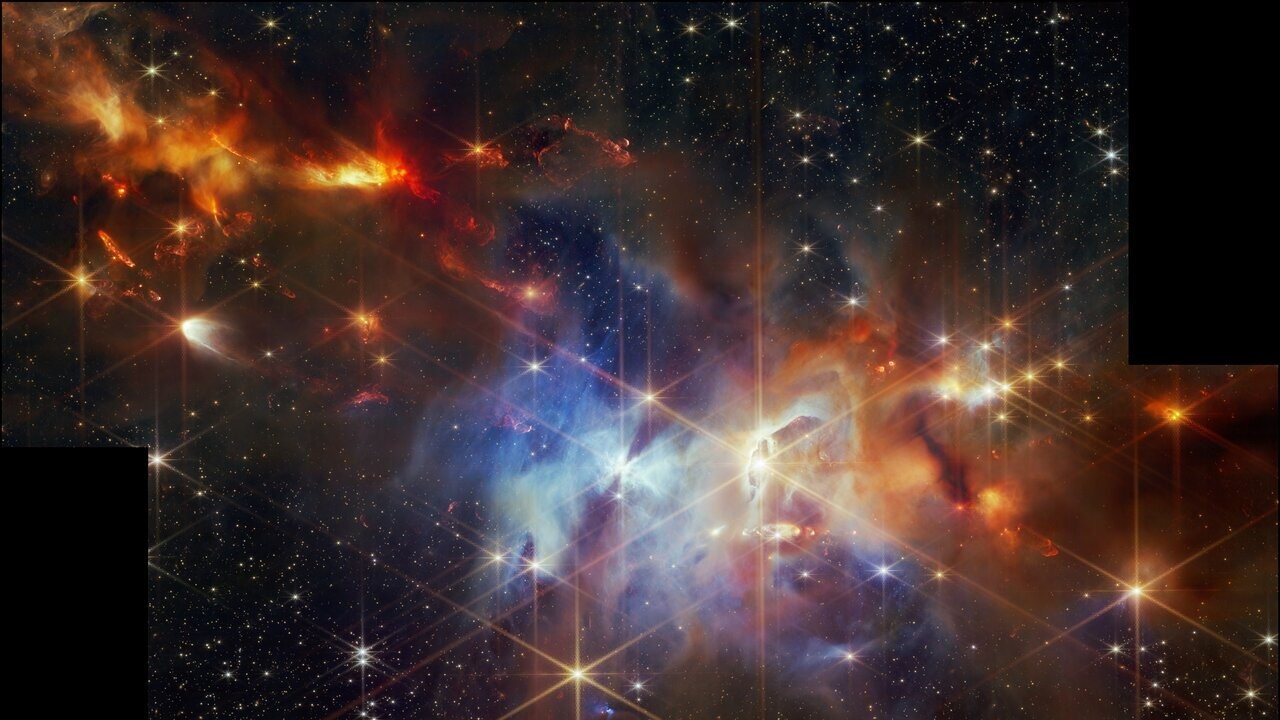
Astronomers using the James Webb Space Telescope (JWST) have observed a strange stellar phenomenon for the first time ever: A group of baby stars painting the walls of their nursery in seemingly coordinated jets of high-speed gas. And strangely, they are all pointing in the same direction.
This messy discovery presents the first direct image of a long-studied phenomenon called protostellar outflows — huge jets of gas released by newborn stars, which collide with and charge material in the molecular gas clouds that surround them. But it also reveals a baffling new mystery: Why do many of the newly discovered jets appear to be aligned in the exact same direction, despite coming from widely separated stars?
The observations, described in a new study in the Astrophysical Journal, could reveal crucial new information about how stars form, and how they evolve.
"Astronomers have long assumed that as clouds collapse to form stars, the stars will tend to spin in the same direction," principal investigator Klaus Pontoppidan of NASA's Jet Propulsion Laboratory said in a statement. "However, this has not been seen so directly before. These aligned, elongated structures are a historical record of the fundamental way that stars are born."
Related: James Webb telescope sees 'birth' of 3 of the universe's earliest galaxies in world-1st observations
The newly imaged baby stars share a nursery in the Serpens Main nebula — a vast and sinuous cloud of star-forming gas located in the Serpens constellation, roughly 1,300 light-years from Earth, according to NASA. Astronomers observed the nebula with JWST's powerful Near-Infrared Camera (NIRCam), taking note of the hot, ionized trails of gas pushing through the star-forming cloud.

The observations revealed at least 20 newborn stars in the region that were actively emitting protostellar outflows. One group of 12 stars (seen in the upper left corner of the JWST image) caught the team's attention. The jets blazing from these stars were all oriented in almost the exact same direction, "like sleet pouring down during a storm," according to the NASA statement. The team estimated that the outflows are relatively young, beginning between 200 to 1,400 years ago.
Such perfectly-aligned outflows have never been seen before, and are highly unlikely to be the result of random chance. According to the researchers, it's likely that the group of 12 jet-spouting stars formed around the same time as each other, and along the same dense filament of gas. A powerful magnetic field defines the boundaries of this star-forming filament, and may also be responsible for directing the angle of the protostellar jets seen spewing there. Over time, this effect weakens as interactions with other objects slightly sway the spin axes of individual stars, redirecting the jets. This drift over time could explain why astronomers have never seen such perfect alignments before.
Further study of these coordinated outflows could reveal new details about how stars are born. Next, researchers plan to study Serpens Main with JWST's Near-Infrared Spectrograph (NIRSpec) instrument to better understand the chemical composition of the vast star nursery — which could reveal how solar systems like our own transfer elements from stars to young planets.







